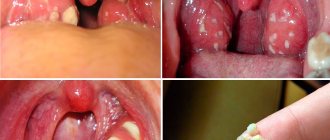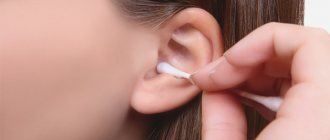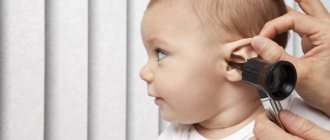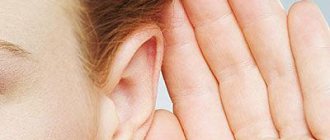Ears get clogged for various reasons. Most of them are natural and harmless, but there are also those that signal serious health problems - ear inflammation, damage to the auditory nerve, allergies, or even diseases of the cardiovascular or nervous systems. Therefore, if the feeling of congestion occurs frequently, it is advisable to consult a doctor.
Ears become blocked when, due to a sharp jump in atmospheric or blood pressure, the proper functioning of the eardrum, which is located at the end of the auditory canal and separates the middle ear from the outer ear, is disrupted. In order for the sound signal to enter the cerebral cortex without distortion, the air pressure in the middle and outer ears must be the same - otherwise the ears become clogged.
It helps normalize pressure: it connects the middle ear to the pharynx, so that after each swallowing movement, air flows to the eardrum, which allows the body to equalize internal and external pressure.
Under the influence of a decrease in atmospheric pressure, the eardrum begins to be pressed into the Eustachian tube, as a result of which air from the middle ear enters the nasopharynx. If the atmospheric pressure increases, the eardrum begins to move towards the outer ear.
Such a change in its position directly affects the perception of sounds and impairs audibility.
Sometimes both ears are blocked (changes in atmospheric or blood pressure), sometimes only one (water ingress, wax plug).
To return the eardrum to its place and stabilize external pressure with internal pressure, the body needs some time (usually this happens by yawning). While the pressure in the ears is equalized, a person experiences distortion of sound perception. The main signs of pressure drop are:
- The occurrence of noise in the ears;
- The echo of your voice echoes in your head;
- Partial deafness appears;
- Sometimes – headache, dizziness.
Natural causes
Basically, the pressure in the ears is disturbed due to a sharp jump in atmospheric or blood pressure - in the heat, in the rain, with a change in altitude (flying on an airplane, climbing mountains), due to pregnancy. In this case, noise and partial deafness are often accompanied by nausea and dizziness.
Another natural cause of hearing loss is water entering the auditory tube during bathing or washing your hair. To get rid of noise, just carefully blot the ear canal with a cotton swab, removing excess moisture.
A common cause of stuffy ears is a buildup of wax, a lubricant that protects the ear from infection. Sometimes, as a result of a disease, sulfur begins to be produced not only quickly, but also in large quantities. If it is not removed in time, due to its viscosity and thickness, it quickly creates plugs that cause a feeling of congestion.
It is especially common to have blocked ears immediately after sleep, when wax plugs change their location and block the ear canal. When a person wakes up and assumes a vertical position, the plugs move again, and the deafness goes away, sometimes completely, sometimes partially.
This problem is easily solved: the wax plug can be removed in a few minutes. But in this situation, it is necessary to take into account that you cannot use cotton swabs: they will only push the wax deeper into the ear. The use of sharp objects is also unacceptable: they can seriously damage the ear and cause complete deafness. In order to get rid of wax, the best way is to see a doctor.
Features of ear treatment at home
The best option is to contact an experienced specialist. This is especially true for people who often suffer from ear problems. However, if your body temperature remains normal and the condition does not cause concern, you can try to eliminate the symptom yourself. All manipulations should be carried out with extreme caution, so if you are not confident in your capabilities, it is better to consult with an ENT specialist. How to treat your ear at home?
For a cold
Ears often become blocked when there is a cold. This is a consequence of blowing your nose. This symptom is not dangerous, and you can easily cope with it yourself. If your ears are blocked, close your nose with your fingers and begin to exhale a large portion of air until you feel a slight pop. Immediately after this, swallow several times.
With a runny nose
If ear congestion occurs due to a runny nose, the symptom should be relieved by rinsing the sinuses. To do this, prepare a saline solution (1 tsp per glass of warm water). Using a small bulb, gently pour a little liquid into each nostril one at a time and immediately blow your nose. After the procedure, you can use any vasoconstrictor nasal drops.
Find out what to do if your ear hurts inside.
Our online calorie calculator will calculate the calories, proteins, fats and carbohydrates of your most favorite dishes and products. The lunar calendar for 2020 will reveal to you its secrets of success, wealth, and good luck in love.
Many people are familiar with the situation when, after water procedures, water gets stuck in the ear. Getting rid of it is not so easy. This not only brings serious discomfort, but can also be the cause of some ENT diseases.
Water stuck in the ear (especially from a dirty pond or swimming pool) contains germs, bacteria, and chlorine. Stagnation of this water in the ear can lead to various inflammatory processes in the outer ear. This is an occupational disease that affects many swimmers.
Before we find out how to get rid of water in the ear, let’s try to understand the sensations in this situation.
Here are some symptoms that may indicate that there is some fluid stuck in your ear.
- The sound of the surrounding world is altered as sounds travel through the water cushion. In this case, there is a noticeable pressure exerted by the liquid on the eardrum.
- There is a feeling of fullness in the ear, as if it is “stuffed up”.
- The ear contains a large number of nerve endings and receptors, so many people literally feel the transfusion of fluid in the ear. It's quite unpleasant.
- Often, water in the ear causes resonance from one's own voice. Perception becomes distorted.
- If water remains in the ear for more than 4 hours, this can lead to inflammation, ear pain, and fever.
- Often, prolonged exposure to water in the ear leads to headaches.
Those who have wax plugs in their ears are at risk. The fact is that the sulfur plug swells under the influence of moisture and begins to put pressure on the eardrum. This is a very painful feeling. Sometimes water from the external meatus can enter the middle ear through microscopic lesions in the eardrum and cause otitis media.
Water in the ear is also dangerous for people whose ear canal walls are too thin. As a rule, inflammation develops much more intensely on irritated skin, and you won’t have to wait for it if the water was soapy or dirty. By the way, water can also get into the middle ear through the nose - this is also fraught with the development of otitis media.
To avoid all these unpleasant consequences, you need to know how to quickly and safely get rid of water in the ear.
We have collected for you the most effective ways to cleanse the ear canal of unwanted moisture.
- Jumping on one leg. This is the most popular way to get rid of water in the ear. Tilt your head towards the “wet” ear and jump on one leg as high as possible. Why on one? The fact is that during a jump on one leg, the amplitude of the oscillations is slightly higher, since a person cannot fully control the body, than during a jump on both legs. Be careful when doing this - it is better to hold on to a chair or the edge of a table, since during intense jumps you may feel dizzy. If you move your head while jumping, the water will come out faster.
- Lying position. To remove water in this way, you need to lie with your back on a horizontal surface. Do not use a pillow, keep your head straight. Slowly turn your head in the direction from which the water has clogged. The physiological structure of the ear canal will allow water to flow down the side surface of the ear canal at this moment. If the water does not come out, repeat the action several times.
- Cotton turunda. Make a small cotton ball from clean, sterile cotton wool and place it in the ear canal. In this case, the auricle should be pulled to the side and slightly upward. This way the ear canal, where the water is stuck, will be as open as possible. Never put hard objects into your ear - this can damage your eardrum.
- Finger. This is the easiest way to remove water from the ear, as it does not require additional items. Tilt your body and head towards the stuffy ear and stick your finger into the ear. Move your finger vigorously from side to side without changing position. After several active movements, you will feel the water come out.
- Palm. Place your hand tightly to your ear and quickly tear it away. In this case, the head should be tilted towards the stuffy ear. When you suddenly remove your hand, a small vacuum is created, which draws fluid out of the ear canal.
- Drink. For this method you will need a flat surface and a glass of water with a straw. Lie on your side so that your stuffy ear is on the bottom. In this position, start drinking water through a straw. Swallowing movements will push water from the ear canal to the exit. After all, it is jaw movements that contribute to the natural removal of wax from the ears. If it is uncomfortable to drink water, simply make swallowing movements, imitating the drinking process.
- Gum. Active chewing movements will help remove water from the ears. Chew chewing gum for 10 minutes and the problem will solve itself.
- Exhalation. If water gets into your ears, take a deep breath and try to exhale it, while holding your nose and mouth. This is usually done when getting rid of stuffy ears. Sharp pressure on the eardrum will force fluid out of the ear canal.
- Boric alcohol. This is another effective way to get rid of water congestion in your ears. Turn your head to the side so that your ear, which is clogged with water, is on top. Place 2-3 drops of boric alcohol inside. Firstly, it will disinfect the liquid and prevent inflammation. And secondly, boric alcohol will help the water evaporate much faster. Thus, within an hour there will be no trace of fluid left in the ear.
- Water. This is a rather dubious method that can only be used as a last resort. It consists of filling the ear with an additional portion of water. We tilt our head so that the ear filled with water is at the top. We pour water into it with a syringe, and then sharply turn our head so that the water flows out. The fact is that water molecules adhere perfectly to each other, and the poured water will come out along with the stuck water.
Very often, water does not find a way out for a long time if it is located in the middle ear. If water gets into the middle ear, you need to put any drops into your nose that will remove and allow the fluid to get out - for example, Naphthyzin.
After instilling a vasoconstrictor, you need to wait for the medicine to take effect and lie on your side so that the water flows out of your nose. You can get rid of water from the middle ear with the help of a spicy and spicy dish. The sharp taste causes the muscles to reflexively contract, and this promotes the removal of fluid.
You should also seek help from a doctor if water does not come out of the ear canal for more than a day. Often this occurs due to the presence of sulfur plugs.
In this case, you need to drip sunflower oil into your ear to soften the plug and go to the doctor.
Self-cleaning will not help here - ear sticks only compact the wax and push it even closer to the membrane. The doctor will easily remove the plug and save you from suffering.
There are some recommendations that are not only useless - they can be dangerous. Under no circumstances should you dry your ear with a hairdryer. Firstly, hot air simply will not reach the area with water. And secondly, such drying can burn the thin skin of the ear canal.
Also, you should not get water with ear sticks or other hard objects - this can lead to injury to the eardrum. In addition, if the skin of the ear canal is scratched, it often ends in inflammation.
If you can’t cope with water in your ear, consult a doctor.
To prevent water from getting into your ears, they need to be protected. Wear earplugs when swimming or showering. Choose the right size so that the earplugs fit snugly into your ear and cover the ear canal. Be sure to wear a swimming cap in the pool.
If your work involves frequent exposure to water, use special ear drops that swimmers use - they have a water-repellent effect. After bathing, dry your ears with the edge of a clean cloth or handkerchief.
By taking these simple precautions, you can protect your ears from water getting into them.
Unnatural causes
Unnatural causes of congestion are caused by various diseases, so you need to pay special attention to them, in particular if tinnitus occurs too often and for no reason.
- Otitis – after otitis, scars form on the eardrum, reducing its elasticity and mobility. You can get rid of such scars only with the help of a specialist.
- Eustachitis is an inflammation of the mucous membrane of the tympanic cavity and the auditory tube. It may occur after a cold or due to a deviated nasal septum. Eustachitis is characterized not only by impaired hearing, but also by a crackling sound and a sensation of fluid transfusion in the ear. This happens because there is a very close connection between the ears, nose and throat. When you have a cold, the mucous membrane becomes inflamed and swollen, blocking the required amount of air from reaching the eardrum, which leads to a decrease in pressure in the nasopharynx and middle ear.
- Allergies – after prolonged use of medications.
- Damage to the auditory nerve - the ears are usually blocked due to traumatic brain injury, coronary artery disease, hypertension. The disease does not go away on its own and requires treatment.
- Diseases of the nervous or cardiovascular system.
Causes of unpleasant sensations (noise, sensation of water, clicking)
Statistics have proven that only one fourth of diseases that have symptoms of noise, sensation of water, clicking, are associated with actual moisture entering the middle ear area. All other reasons have a different nature of occurrence:
- inflammatory;
- mechanical;
- physical.
The first group of reasons is associated with the penetration of infection into the ear area. A gurgling symptom is especially common in inflammation of the ear canal, when the process is just beginning. This type of inflammation affects the canal, which simultaneously performs several functions: protective, acoustic, drainage, ventilation.
Consequently, after tissue damage, the Eustachian tube can no longer fully perform its functionality, and certain noises appear. As the disease progresses, tinnitus is accompanied by heaviness in the head, and then gurgling on the side where the inflammation occurs. There is no water in the middle ear, but it feels like fluid remains there until professional treatment begins.
The same false sensation of the presence of water in the ear can be caused by an extensive wax plug. Then tinnitus and clicking will accompany any human movement.
Water in the ear in the morning
This morning condition is a sign of an inflammatory process, which may be accompanied by pain, pus formation and other symptoms. If there are no additional symptoms, but only drops of moisture from the ears, then this is not a reason to endure or self-medicate. This is how you get ear inflammation. The sooner you seek help from an ENT specialist, the sooner you will get rid of the disease and preserve your hearing.
After all, even one symptom, for example, tinnitus, is already a reason to sound the alarm. The inflammatory process quickly develops in the ear area and spreads to neighboring tissues and organs, and the death of cells in the sound-receiving and sound-conducting organs is hearing loss. It can develop slowly or rapidly, depending on the diagnosis and physiology of the patient.
How to get rid of noise
If tinnitus occurs due to a sudden change in pressure, the feeling of discomfort should go away on its own after a while. To help the body cope with the situation, you can simply open your mouth and sigh (yawn), swallow saliva, drink some water in small sips, eat something, chew gum, or lie quietly on the bed for a few minutes. This will allow the Eustachian tube to open, let air in and equalize the pressure.
If pressure in the ears occurs frequently, it needs to be normalized. For some, a walk in the fresh air helps stabilize their hearing, for others drinking coffee (not allowed during pregnancy), but the best solution would be to consult a doctor who will determine the exact cause and prescribe the appropriate treatment and regimen.
In modern medical practice, the number of calls for ear problems is constantly increasing. The most popular are hearing loss or complaints of a feeling that something is pressing on the ears, but the patient cannot find out the reasons on his own. It's better not to guess and see a doctor.
How to treat ear congestion
It is not always possible to cure ears on your own, and this is fraught with dangerous complications. If ear congestion occurs, you should consult a doctor. He will find out the cause of the symptom and, based on the examination results, select a therapeutic complex. So, for otitis media, you may be prescribed ear drops and medications.
Ear drops
Often, the doctor recommends peroxide, boric alcohol or Otipax for ear congestion. In addition to them, “A-Cerumen”, “Garazon”, “Otinum” and other drops help cope with the symptom. The drug is selected based on the cause that caused the development of congestion without pain. Ear drops may be prescribed if the symptom is caused by:
- accumulated large amounts of sulfur;
- otitis;
- fungal growth;
- Aerootitis.
Massage
It is possible to get rid of ear congestion through therapeutic massage. This method is applicable to eliminate post-cold symptoms. In addition, massaging the eardrum is used to treat ear congestion. To do this, cover your ear with your palm and make circular movements in one direction and then the other. This method is effective if there is water in the ear canals (or a feeling that something is squelching inside).
Causes may be hidden throughout your body, not just in your ear
Such ailments indicate a variety of health problems:
- Hypertension. In this case, the symptoms expand to unpleasant phenomena: a feeling of numbness in the limbs, loss of strength, pain in the back of the head, increased irritability.
- A benign tumor of the auditory nerve (acoustic neuroma). It is she who presses and creates.
- Migraine. The feeling of burning and pain in the head is mainly a hereditary female disease.
- Osteochondrosis. Disorders in the articular parts of the cervical cartilage lead to compression of the spinal cord, which threatens paralysis.
- Sinusitis. The cause is often bacterial in nature and requires antibiotic therapy.
- Otitis.
- Sulfur plug.
Preparations for dissolving wax plugs
Remo wax
Pharmachologic effect. According to the instructions, this product is intended for instillation into the ear canal to dissolve earwax.
Often, earwax is removed by itself during the movement of the lower jaw, but with some irritating factors such as water, dust, earplugs, skin diseases, the secretion of earwax can increase many times, resulting in the formation of a cerumen plug. Remo Vax does not contain aggressive components, so it is allowed to be given to children from birth. This product is well suited for young children; persons who go in for swimming; poor hearing; and people who frequently use headphones or hearing aids.
Mode of application. Before use, you need to hold the bottle of Remo Vax in your hand for several minutes so that the product warms up to body temperature. The patient should lie on his side, take hold of the knot and first pull it down and then up. This is done so that the drug flows down the wall of the ear canal, since it is strictly not recommended to drop it into the center of the ear immediately, as this can lead to the formation of an air lock. After you have prepared the ear canal, instill 20 drops of the drug.
Propolis tincture for ear treatment:
After applying the drops, the patient may experience a sensation of water in the ear, but there is nothing to worry about. There is also no need to place cotton wool in the ear; it can absorb all the liquid before it begins to act. After you have instilled the liquid, lie on your side for another 10 minutes, then turn over to the other side and let the liquid flow out for one minute. The drug is used once every 14 days; additional drugs should not be used while using Remo Vax.
Drops for dissolving sulfur plugs "A-Cerumen".
They are very convenient to use, one bottle is already a dosage for one instillation, half a bottle in each ear. After instillation, you need to wait a few minutes, then rinse with saline solution.
Vascular diseases lead to ear problems! Did not know?
- An aneurysm is a bulge in the wall of an artery. It is she who will press in your ear.
- Atherosclerosis (deposition of cholesterol in the lumens of blood vessels).
- Vertebrobasilar syndrome (impaired blood flow).
Stuffed ear
Balloon dilatation is often used as a surgical procedure. Quite a complicated procedure. This is an expansion of the affected artery using a balloon, which is located on a tube inserted into the vessel. This operation is contraindicated for severely advanced disease. In this case, vascular prosthetics is prescribed.
As you can see, the reasons why something is pressing on the ears are very complex and numerous. Self-medication and arbitrary diagnosis are strictly prohibited. Only a highly qualified doctor will understand and help cope with the disease.
Causes of discomfort
Long-term use of medications often causes a feeling of something pressing on the ears. Surprisingly, pregnancy is also often the cause of discomfort (in these cases, vitamin complexes are prescribed to strengthen the walls of blood vessels). Constantly listening to music with headphones and long telephone conversations puts significant stress on the eardrum.
The most common causes of the feeling that something is pressing on the inside of the ears are purulent processes and inflammatory diseases.
Pronounced when turning the head sharply. A person experiences a feeling of intolerable pain, since the eardrum is a very thin structure and it is it that takes on all the focal pyothorax. In this case, the antibiotic will stop further destructive effects by removing the cause.
To treat and get rid of phlegm, our readers successfully use a natural remedy for phlegm. This is a 100% natural remedy, which is based exclusively on herbs, and mixed in such a way as to combat the disease as effectively as possible. The product will help you quickly and effectively overcome a cough in a short time, once and for all. Since the drug consists only of herbs, it has no side effects. Does not affect blood pressure or heart rate. Get rid of phlegm..."
If there is a feeling of pressure in the ear, this may indicate a dysfunction of the auditory tube. The etymology is caused by a strong allergic reaction to a pathogen or abnormal development of an organ. It happens more often in childhood than in adults. Abnormal development of the ear is adenoids, cleft palate, polyps and swelling of the nasopharyngeal mucosa.
Hearing loss
Pressure change
Hearing loss may be the reason why pressure appears in the ears and does not go away for a long time. This type of illness can be either congenital or acquired. It is necessary to monitor the course of any of its forms with all seriousness, since it is practically incurable. You can only stop the decline in hearing through certain measures, preventing the transition to the next stage of the disease. Hearing loss has 4 development categories.
Air travel, high-altitude walks, rock climbing, diving are the causes of pressure changes and a feeling of stuffiness or a feeling of pressure in the ear. In these cases, the tympanic septum is pressed into the Eustachian tube. This causes discomfort in the ears. To eliminate the symptoms, it is enough to suck on a lollipop, chew gum or swallow saliva. A similar arsenal is issued upon flight.
Eustachite
May be with the symptoms described above. It is an acute or chronic disease of the auditory tube. In medical practice it is often referred to as the first stage. The cause of complicated eustachitis is the diffusion of infection of the nasopharynx, passing into the upper respiratory tract. The causative agents of this disease are staphylococcal and streptococcal viruses, as well as pneumococci. Sometimes the disorder is caused by a fungal infection or disturbed microflora (tuberculosis, syphilis, chlamydia).
Unfortunately, such a terrible state of the body as a hypertensive crisis can also cause the feeling that something is pressing on the ears from the inside. This is a serious condition that can lead to death and requires prompt assistance from specialists.
What to do if there is an air lock in your ear
Surely every second person knows firsthand such unpleasant sensations as noise in the ear, whistling, and stuffiness. In most cases, a person suffers from inflammatory processes and ear congestion.
A person regards this condition as if there is an air plug in the ear. In one case it is a consequence of harmless inflammation, in another it may indicate a serious pathology. It is important to promptly determine the cause of the problem and undergo treatment.
About air jams
This problem can occur in both adults and children, causing great discomfort. In some cases, the condition can worsen significantly and be aggravated by dizziness, as well as hearing loss.
Of course, if you know for sure that congestion is in no way connected with an inflammatory disease or other pathology of your body, there is no need to worry, the normal state will soon be restored. However, if the described symptom torments you for more than one day, this is a reason to contact an ENT specialist.
The problem of congestion can arise as a result of diseases of the paranasal cavity, during a cold and even with allergies. A person may experience a crackling sound in the ears, and also hear a sound similar to the rushing wind in a tunnel.
Causes of ear congestion
To decide on treatment tactics, the doctor must find out the cause of the problem.
In most cases, excessive sulfur production can cause an air lock to form. This component is a natural component of the hearing organ. Earwax is designed to protect the cavity of the inner and middle ear.
The ear canal should be cleaned of accumulations of sulfur using special drops once a week.
It is necessary to take into account that improper hygiene of the ear canal or its complete absence can lead to the formation of wax plugs and other various pathologies of the ear, causing great discomfort to a person.
To remove the resulting wax plugs, you should seek help from a specialist who will perform the rinsing procedure. You can also rinse your ear at home using special solutions purchased at a pharmacy if there is a small amount of wax in the ear canal. Before the procedure, consulting a doctor will not be superfluous.
The next reason is the rapid rise up. For the normal functioning of the ears, there is air in the middle ear cavity. With its help, the air pressure on the other side of the eardrum is balanced.
A good example is flying on an airplane.
The takeoff process is easier for the ear to bear than the landing process, since the air pressure behind the eardrum is an order of magnitude higher than the air pressure in the aircraft cabin.
Therefore, during takeoff and landing, passengers are encouraged to suck on a lollipop. The Valsalva method also helps well - the nose is firmly pinched with the fingers, and the air is gently exhaled “into the nose.”
A large amount of dirt and dust can also cause this problem. In some cases, a person may completely lose hearing when dust mixes with sulfur, forming a plug of very impressive size, up to the complete closure of the ear canal. When any foreign object gets in, a person also feels stuffy.
It is worth noting that this unpleasant symptom may appear after suffering from inflammatory diseases such as otitis media. But, in addition to the airlock, hearing impairment and nasal congestion are added.
How to get rid of an air plug in your ear
To prescribe the necessary course of treatment, you need to find out the cause of the formation of this unpleasant symptom by undergoing an accurate diagnosis. The doctor will carefully examine the ear that is bothering you and prescribe the necessary treatment. In order not to aggravate the situation, you should not try to get rid of the traffic jam yourself.
If the problem arises as a result of a large accumulation of earwax, you can soften the ear canal with olive oil, and then go to the doctor to have the wax plugs washed out.
In the event of air traffic jams due to air travel or driving in a car, medications will not be needed, since the change in air pressure is to blame.
You can take the following measure - take a deep breath, and then yawn. You can also chew gum for a few minutes. If you have a flight planned, you can purchase earplugs.
This device will make your condition easier.
If congestion occurs as a result of seasonal allergies, experts recommend taking a decongestant according to the instructions. You can also take antihistamines prescribed by your doctor.
Be very careful when taking certain medications, without violating the prescribed instructions.
General rules of therapy
If you experience the slightest pain that lasts more than a day, this is a reason to consult a doctor. In some cases, the cause of pain and congestion is inflammatory processes.
The doctor will examine the diseased area and prescribe adequate treatment. As a rule, therapy includes the following points:
- Antibiotic therapy - antibacterial drugs should be taken in a clearly prescribed course. Antibiotics are designed to destroy pathogenic microorganisms that influence the development of the disease.
- Ear drops – used to remove air pockets. In addition, many drops have an analgesic effect.
- Physiotherapy (warming) - you can warm up the sore ear at home by applying dry heat (a heating pad or a bottle of warm water) to the ear.
Prevention
As preventive measures, you can eat more fresh vegetables and fruits, and also take vitamin complexes.
Of course, daily and proper hygiene of the external auditory canal will reduce the risk of such an unpleasant problem. Try to cleanse accumulated wax once a week.
Conclusion
Be very attentive to your health, if the slightest signs of inflammation appear, immediately contact an ENT specialist. It is worth warning that treating infants with various medications without consulting a doctor is prohibited. All children are predisposed to developing ear infections. You should not self-medicate without first visiting a doctor.
Rate:
Loading…
Source: https://StopOtit.ru/chto-delat-esli-v-uhe-obrazovalas-vozdushnaya-probka.html
Is it possible to recover? Or a life sentence?
Presses on my ears
If it is determined that the cause of the patient’s complaint is a bacterial infection, then antibiotic treatment is prescribed. A course of vitamins and immunostimulating drugs is added to them. Painkillers will help dull the painful attacks.
Inflammation cannot be left to chance, otherwise it will become chronic and will make itself felt throughout your life.
When the cause of the sensation, as if something is pressing, is not related to ailments of the ears themselves, it is worth undergoing examinations with other doctors in the necessary areas. Given the similarity of blood vessel diseases, only a thorough medical examination can reveal the authenticity of the origin of the causes of the feeling that something is pressing on the ears.
What research should you go through to save yourself?
- Determination of intracranial pressure.
- Ultrasound of blood vessels in the cervical spine.
- Photoscanning of the brain.
- Measuring blood pressure over several days.
- Tomographic method for studying internal organs.
- Complete x-ray of the spine.
The totality of the procedures performed will give a true picture of the patient’s condition regarding the presence of reasons for the feeling that something is pressing from the inside on the ears. After diagnosis, it is necessary to begin treatment. Don’t be lazy to follow all the prescribed norms and recommendations - your health and the ability to remove what’s pressing in your ear depend on it.
Pressure on the ears generally appears no matter how old the patient is. Of course, there are exceptions, for example, vascular diseases, age-related hearing impairment, and the like. Typically, pressure on the ears is associated with pathological changes that can be completely cured.
- Headache. They can be strong or weak, dull or sharp, and located in various parts of the head. The frequency of pain also varies, and it can also be chronic.
- Dizziness. It can appear constantly or only with sudden movements. In some cases, the head feels dizzy at the slightest turns, but not at rest.
- Loss of coordination of movements, including problems when walking.
- Nausea can be constant or in attacks, but very rarely it is accompanied by vomiting.
- Hearing impairment in both ears or in one ear.
- A sharp reaction to loud sounds and bright lights.
- Distortion of sounds during perception.
- The appearance of non-existent sounds. Sometimes, when there is internal pressure on the ears, it can seem as if you are hearing certain sounds that are not actually there. For example, ticking, doorbell, etc.
- Pain in the heart, under the shoulder blade, anywhere in the chest
But pressure itself cannot definitely indicate the disease that caused it.
Typically, the disease is characterized by many symptoms, the totality of which helps to identify the disease. If for no apparent reason there is pressure on the head in the area of the ears, the reasons are unclear. You definitely need to see a doctor, he will order an examination, give a diagnosis and prescribe the appropriate treatment. Sometimes you will have to use the services of several specialists (neurologist, cardiologist, etc.), because the reasons may lie much deeper.
What diseases cause these symptoms?
Purulent otitis media
First of all, if a headache is accompanied by ear congestion, the doctor will suspect a pathology of the auditory analyzer
. It could be:
- catarrh of the Eustachian tube;
- labyrinthitis;
- atresia of the auditory canal;
- eardrum injuries.
One of the main symptoms of a purulent-inflammatory process in the hearing organs is a decrease in pain in the head when purulent discharge flows from the ear. The feeling of pressure and heaviness also disappears.
The same symptoms can occur with infectious diseases of the upper respiratory tract
. Pain in the forehead and temples occurs with sinusitis. In this case, an additional sign will be impaired nasal breathing. Migraine intensifies when the head is tilted to the affected side.
If the ENT organs are in order, you should be examined by a cardiologist
. Often, a sudden loss of hearing and the appearance of throbbing pain in the temples, as well as a pressing sensation in the back of the head, indicate:
- arterial hypertension;
- hypertension;
- vegetative-vascular dystonia.
Hypertension may affect the cochlea
. Often, due to increased blood pressure and atherosclerosis, deafness suddenly occurs. The cause of this is thrombosis or embolism of the internal auditory artery.
Deviation of blood pressure from the norm can occur not only due to diseases of the cardiovascular system. Hypertension
happens with kidney pathology, diabetes mellitus.
About the presence of hypertensive encephalopathy
indicates the appearance of the following symptoms:
- nausea;
- dizziness;
- hearing loss;
- visual impairment;
- “heavy head”;
- lack of coordination;
- decreased cognitive abilities;
- constantly elevated blood pressure.
Important!
If you suddenly have a feeling of sharp pain in the back of your head, your ears are blocked, your head is buzzing, and black dots are floating in front of your eyes, the ground begins to disappear from under your feet - these are harbingers of a stroke. Be sure to consult a doctor.
It happens that only intracranial pressure increases, while arterial pressure is normal, in rare cases it decreases. This condition occurs most often due to degenerative changes in the cervical spine
and talks about:
- osteochondrosis;
- spondylosis;
- osteophytes, etc.
Osteochondrosis
– the main cause of the development of discirculatory encephalopathy. With untimely and inadequate treatment, the disease leads to disability. Characteristic signs of cerebral vascular damage are:
- stuffy ears;
- pulsation of blood vessels in the temples;
- fog;
- migraine;
- feeling like my head is about to explode.
And also symptoms such as ear congestion and headache are characteristic of serious diseases that are treated surgically
:
- tumors;
- sarcoma;
- cyst;
Timely consultation with a doctor will help avoid possible complications
If you have a headache, stuffy ears, and your blood pressure is normal, it is quite possible that an acoustic neuroma has occurred. This is a benign tumor, but with a severe clinical course. At the third stage of the disease, deafness, visual disturbances, and damage to the cerebellum and cranial nerves occur.
Noise problem
There are many reasons that can cause cracking. You can start with simple fatigue and end with the most severe forms of various diseases. The main reasons that can cause noise in the head are identified; we need to talk about them in more detail. But first, it should be noted that self-diagnosis can only do harm in this situation: a “homemade” diagnosis will not lead to anything good.
Doctors identify the following reasons:
- Changes in the processes of perception, actualization, transmission and generalization of individual nerve impulses in one or both auditory nerves. The presented crackling sound in the head manifests itself through its monotony and in the future can cause general hearing loss. The main reasons for such negative manifestations are considered to be previous brain injuries, ongoing inflammatory processes in the ear and in case of changes in cerebral blood flow.
- Diagnosis of turbulent blood flow in a narrowed vessel. Such a noise is most often defined as pulsating, and the overall intensity may depend on blood pressure readings. In this case, the causes of a crackling sound in the head are pathological changes in the structure of blood vessels, as well as a general narrowing of the vessels carrying blood to the brain.
- Changes in the functioning of the vestibular apparatus, which is responsible for complete coordination and stable position of the body in space. A cracking sound in the head can occur due to a sudden change in body position.
- Lack of stability of the vertebrae in the cervical region. In this case, the vertebral processes can put pressure on the blood vessels. This type of noise in the head is characterized by its persistence. The patient simply begins to get used to such discomfort and puts off going to the doctor until the last minute.
- Brain hypoxia, which is caused by a lack of oxygen supply to the brain. It can also occur due to impaired cerebral circulation and possible neoplasms in the brain structures.
The factor of individual tolerance to the perception of various sounds cannot be ignored. This is based on ongoing neurosis, overwork, and stress.
The use of certain medications used in the treatment of diseases may have side effects. For example, antidepressants, cardiovascular drugs, anti-inflammatory and non-steroidal drugs. Ordinary intoxication begins, and as a result, undesirable processes begin to appear.
How to get rid of the problem
If this phenomenon is short-term and associated with acute respiratory viral infections, acute respiratory infections, then the unpleasant sensations will disappear when nasal breathing is restored and signs of intoxication disappear. If you are completely unbearable to endure the pounding in your temples, aching in the back of your head and decreased hearing, you can try to get rid of these symptoms on your own, but you should not put off seeing a doctor for too long. Only a doctor can choose the correct course of treatment.
What to do when your ears are blocked and your head hurts:
Having learned what causes stuffy ears and headaches, doctors recommend completely different treatment methods to patients.
Patients with arterial hypertension
The doctor prescribes medications that lower blood pressure:
- captopres;
- amidopyrine;
- diuretics;
- bisoprolol, etc.
Analgesics are recommended to relieve headaches
.
And if the disease is caused by a lack of B vitamins, the drug Milgamma
, which has an analgesic effect, is prescribed. You should not take medications yourself; they should be prescribed by a doctor. Otherwise, instead of a positive effect, the patient will worsen his condition.
When your head is compressed or your ears are blocked, you should definitely consult a doctor. If you identify the disease in the initial stages and start treatment on time, you can avoid serious consequences. Self-medication and negligent attitude towards one’s health can lead to serious complications and even disability.
Unfortunately, many people have hearing problems. And the older a person gets, the more likely the likelihood of acquiring one or another “ear” pathology becomes. According to doctors, about 30% of the entire world population has some kind of hearing problems, and modern life - with its stress, fast pace, existence in a noisy city - largely contributes to this.
One of the most common complaints that ENT doctors and audiologists have to listen to is the patient’s feeling of pressure on the ears from the inside. It is this question that we will consider in the article: we will find out what causes this symptom and what methods of therapy can eliminate it.
Let's find out what diseases and pathologies can cause feelings of pressure in the ears from the inside.
- Migraine
is the most common and most common cause of feeling internal pressure in the ear area. The symptoms of migraine are extremely unpleasant and, moreover, long-lasting. Increased intracranial pressure can also cause a feeling of squeezing in the temples and ears. - Otosclerosis
. This disease is characterized by increased growth of spongy bone tissue in the inner ear. This growth, if present, will certainly cause a feeling of pressure and fullness in the auditory organs. - Atherosclerosis of blood vessels located in the brain.
This pathology of lipid metabolism in blood vessels may well cause a feeling of pressure. Vascular diseases leading to the appearance of this symptom can be different: in addition to atherosclerosis, an aneurysm and other pathologies are possible. Almost all diseases of the blood vessels located in the neck and head can lead to a persistent or periodic feeling of squeezing in the temples. The so-called neuroma, or tumor of the auditory nerve, sometimes also causes the described symptom. - With hypertension
(high intracranial pressure), it goes without saying that this pressure will be felt in the ear area. Colds and sinusitis can also cause this symptom. - Otitis media in the acute or chronic phase
can also lead to this problem. Inflammatory processes, possibly of an infectious nature, may be one of the possible causes of this symptom. Inflammation can be caused by otitis media or other diseases. Most often, if this is the reason, a feeling of pressure from the inside in the ear area will occur already at the last stage of the disease, when purulent otitis media leads to perforation (rupture) of the eardrum. In this case, the feeling of squeezing will also be accompanied by severe pain in the ears. - Osteochondrosis of the cervical vertebrae.
In this case, the feeling of pressure occurs due to microtrauma of the blood vessels, which leads to osteochondrosis.
The feeling of pressure can, in addition to the serious ones listed above, also have such a simple and banal cause as a wax plug in the ear. It is easiest to eliminate such a cause, but it is better to do it under the supervision of a specialist.
Taking certain medications may also cause a feeling of fullness in the ears from the inside.
For example, the antibiotic Gentamicin has this effect. In this case, if such a symptom appears, you will most likely have to change the medicine.
In the video it puts pressure on the ears from the inside:
In addition to the above reasons, a feeling of squeezing in the ear area from the inside can also be caused by such everyday external reasons as frequent listening to loud music, a long telephone conversation, etc. factors. Sometimes loud background sounds can cause a feeling of pressure from inside the ears.
This article will help you understand what this disease looks like and how it should be treated.
But what is better than Otipax or Candibiotic, and where to use them, is described in this
What analogues of Otof drops currently exist, and what their names are, is described in this article:
In what case it is worth using, and how effective they are, is described in this article.
Recommendation: for normal well-being and to prevent damage to the eardrum, you should avoid listening to loud music. Sometimes even a single visit to a rock concert can cause a feeling of squeezing in the temples, let alone systematically listening to such music.
How to remove water
If there are no pathologies in the ear area, then if water gets into the ear, it is enough to do several exercises:
- strong inhale, hold your breath, exhale;
- jumping on the leg on the side of which the ear is blocked;
- tilting the head towards the affected ear and external tapping on the outer ear (creating pressure differences in the ear area).
In a healthy ear system, congestion after swimming will go away in just an hour. But if the symptoms do not decrease, then a visit to the doctor is mandatory. Either the water got in due to disorders of the ear organs, or there is no water as such, but an inflammatory process is in progress. In both cases, diagnosis and treatment by an ENT specialist are necessary.
Water in the outer ear does not pose any danger if the entire ear system is functioning normally. It enters the external ear opening and passes through the Eustachian tube, reaches the eardrum and returns back the same way - through the auditory tube. After some time, it flows out of the outer ear on its own.
But if there are any pathologies of the outer ear or membrane, then the process is aggravated by water entering the middle ear. And then inflammation is possible - otitis media. If you endure discomfort in the ear area for a long time, then otitis media from the 1st degree passes into the 2nd, 3rd and 4th. And these are already serious diseases, accompanied by pain, fever, and dizziness. Treatment for advanced forms is long-term and consists of different methods: medication, physiotherapy, herbal medicine, etc.
If the feeling of water in the ear does not go away for more than 2 hours, there is a reason to consult a doctor.
If you feel as if there is water in your ear, and you are walking from a pool after swimming or from a pond in the summer, then perhaps water has actually gotten into your ears. Do some simple exercises: shake your head, jump on one leg, etc. This discomfort should go away in a maximum of an hour. If it doesn't work, then it's possible:
- water entered the middle ear due to deformation of the eardrum;
- water entered through the sinuses;
- you develop ear inflammation.
In any case, going to the doctor will help you quickly and painlessly get rid of unpleasant sensations.
If you have a persistent sensation of water in your ear, then you should not remove it from there yourself using mechanical methods:
- pear;
- cotton swab;
- tampons, etc.
These actions can damage the ear membrane and only worsen the situation. Do not apply warm heating pads or herbal warm compresses. The disease may intensify, especially if there is an inflammatory process in the ear area. No independent decisions or manipulations. If the feeling of ear congestion is accompanied by pain. the only thing you can do is take painkillers. Then immediately consult an otolaryngologist.
Therefore, if under any circumstances, especially after swimming in open fresh water, water still gets in and gets stuck in your ear, what should you do? You should try to remove it yourself. Here are some of the easiest ways to get water out of your ear:
- blot the ear well with a terry towel;
- gently dry the ear canal using several cotton swabs;
- jump on one leg, tilting your head to your shoulder towards your stuffy ear;
- lie on your side so that the ear with the stuck water is at the bottom and lie quietly, allowing it to flow out;
- drop a few drops of pure medical or boric alcohol into the ear;
- press your palm tightly to your ear, and then sharply tear it off so that the created pressure difference pushes out the water;
- dry the ear by applying a heated bag of salt to it;
- insert a gauze pad into the ear canal, carefully screwing it deep into the ear;
- dry the ear with a hairdryer at medium temperature (if otitis has already occurred, this should not be done under any circumstances!).
If the cause of water retention in the ear is a wax plug, then you can try to soften it by dropping a solution of hydrogen peroxide into the ear. After 5-10 minutes, you need to carefully clean the ear canal with cotton swabs, step by step removing excess wax and remaining water.
Rare causes
In addition to the already discussed frequently occurring reasons for this phenomenon, there are others - more rare, but, nevertheless, also occurring and quite real. Let's find out what these reasons are.
- Anatomical pathologies of the auditory organs.
Sometimes congenital abnormalities of the hearing organs lead over time to the appearance of compression in the ears from the inside. - Diseases such as adenoids,
the growth of polyps, and various types of tumors lead to an increase in deformed soft mucosal tissue, which puts pressure on the blood vessels, causing an unpleasant symptom. - Sometimes changes in atmospheric pressure
can play a cruel joke on weather-dependent people, causing them an uncomfortable state of internal pressure in the temples and ears. - Flying on an airplane
, diving, riding a merry-go-round and some other types of activities can lead to the appearance of so-called aerootitis, one of the signs of which is a feeling of squeezing in the ears from the inside. By the way, in this case you can get rid of this unpleasant feeling quite simply: you just need to suck a lollipop or chew gum. - Eustachitis
- inflammation of the mucous membrane of the tube of the same name can also lead to the appearance of this symptom. This, by the way, is a very alarming diagnosis. It is necessary to take treatment measures as soon as possible, otherwise complete hearing loss is possible. - In a hypertensive crisis,
complete blocking of the ears occurs, but this goes away when the threat of a stroke is relieved. - Water ingress
can also cause an unpleasant symptom in the form of a feeling of pressure in the ears. Therefore, it is necessary to carefully get rid of any spilled water after swimming, and to swim in the pool wearing a rubber cap.
In the video why there is pressure on the ears from the inside:
Symptoms
Most often, along with a feeling of squeezing in the ear area, a person experiences other, no less unpleasant symptoms that cause severe discomfort. Let's find out what these symptoms are.
A decrease in the level of hearing perception is often accompanied by a feeling of pressure in the ears from the inside. Most likely, we are talking about a banal sulfur plug, but more serious reasons are possible. Only a doctor can determine this for sure during an examination.
- Headache.
Moreover, the pain can be of a different nature (dull, sharp, throbbing), and can be felt in various parts of the head. Headache in this case can be either periodic or almost background. - Dizziness.
This unpleasant symptom often accompanies a feeling of squeezing in the temples. Dizziness can only be observed when standing up suddenly, but it can also be felt constantly in a less pronounced form. - Impaired coordination of movements
directly follows from the previous symptom. - Nausea and even vomiting
can also be present with pressure in the ears from the inside. Nausea, by the way, can be felt almost constantly, but vomiting is rare.
A sharply negative reaction to harsh light, loud sounds, intolerance to these factors.
Periodically, a person hears sounds that were not really there (phantom). For example, he may hear clocks that are not in the house, non-existent doorbells, or other similar sounds.
There is often accompanying tinnitus, humming, and sometimes ringing. Such sounds can be very annoying, and even infuriate people with weak nervous systems.
Sometimes pain may occur in the heart, under the sternum, in the intercostal space.
Briefly about the airlock
Airlock is a collective term for ear discomfort and not a clinical diagnosis. There is no such disease; the term explains the unpleasant sensations in the organ of hearing. In other words, we are talking about congestion, which sometimes causes hearing impairment and dizziness.
The problem is typical for both children and adults. It often goes away after the stimulus, such as a loud sound or high atmospheric pressure, is removed. In other cases, it may be accompanied by severe inflammation, swelling, and hearing impairment.
It is important to find out the root cause of the disease and, if necessary, carry out comprehensive treatment.
“Ear congestion for a short period of time is not a cause for concern. In most cases, this symptom goes away on its own within a few hours, or at most within a day. If discomfort bothers you longer, and unpleasant signs increase, you should contact an otolaryngologist and find out the cause of the disturbances.”
In practice, the symptom of ear congestion is experienced by a person flying on an airplane or climbing a mountain peak. But these are not all the reasons for the occurrence of such a phenomenon.
Treatment
Let's find out exactly how to treat this unpleasant symptom.
The first thing you should do if you experience pressure from the inside of your ears is to see a doctor. As we have already established, the reasons for such pressure in the ears can be different, therefore, as is clear, the treatment required is also different. When the cause of the symptom is eliminated, the symptom usually goes away on its own.
First you need to visit an ENT specialist
who will examine the ears for inflammation, otitis media, colds and other factors that affect overall well-being. The presence of injuries to the eardrum, its possible perforation, and various pathologies of the internal auditory organs can also be detected at this stage. It may also turn out that the feeling of fullness in the ears is caused by a banal wax plug, which the doctor can immediately remove. It is likely that this method will already return you to normal health, and the feeling of pressure will disappear.
The ENT doctor will also conduct a special examination - an audiogram, which will help identify existing problems with auditory perception. After examination and making an accurate diagnosis, the doctor prescribes treatment appropriate to this diagnosis.
Typically, complex therapy includes:
Treatment varies depending on the cause of the disease, and may also include antibiotics, anti-inflammatory drugs, cold medicines, vitamins and other medications. If the cause is serious enough that it cannot be eliminated with medication, an appropriate operation may be prescribed.
It is necessary to strictly follow all the doctor’s instructions in order to prevent the development of a chronic disease or any complication. If the ENT doctor was unable to identify the cause of internal pressure in the ears, then he will have to undergo a full comprehensive examination of the body: pass the necessary tests, and visit doctors of other specializations.
Maybe
Purpose of treatment
It is impossible to select a treatment method without determining the cause of the pressing pain. Once the problem is detected, treatment is prescribed in accordance with the diagnosis. If the problem is caused by hypertension, atherosclerosis or osteochondrosis, then the treatment is carried out by a therapist. If you have sinusitis or otitis, you cannot do without the help of an otolaryngologist.
Usually, for pressure in the ears, treatment is prescribed with several groups of medications.
For high blood pressure, Captopril is prescribed to eliminate discomfort in the ears. Therapy can also be carried out using nootropic drugs to normalize blood circulation in the brain.
For osteochondrosis, complex treatment is prescribed using local anti-inflammatory drugs applied to the shoulder girdle. This is Diclofenac or Ketoprofen. They also prescribe medications to improve blood flow in the brain and strengthen blood vessels. They can use medicines based on extracts of medicinal plants.
If the problems were caused by sinusitis, then first the nasal passage is cleared of pus with a puncture. After this, anti-inflammatory and antibacterial drugs are prescribed.
To eliminate purulent inflammation in the ears, antibiotics are prescribed. They are taken in the form of drops that are placed into the ear openings.
To eliminate atherosclerotic changes in blood vessels, blood thinners such as aspirin and drugs to reduce the risk of blood clots are used.
Migraine is an incurable disease. It will appear periodically throughout life. Painkillers can be used to relieve attacks.











